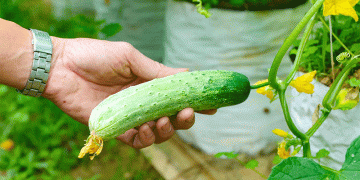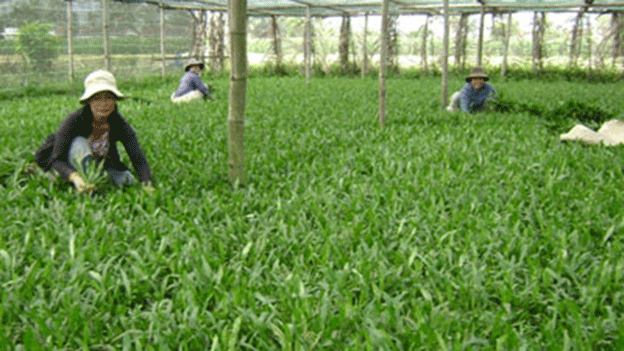In Khánh Hòa, a province in southern Vietnam, the successful cultivation of Rau Ngò Gai (Vietnamese coriander) has opened new opportunities for farmers traditionally dependent on rice farming. Lê Thị Hồng Mỹ, a member of the local farmers’ association in Quang Thạnh, Diên Hòa, took the bold step of introducing this herb as a rotational crop on her family’s rice fields. Since 2020, her project has proven to be highly lucrative, offering a sustainable alternative to rice farming and helping to diversify income sources for local farmers.
Rau Ngò Gai, known for its distinct aroma that fills the fields when disturbed, is a popular spice in Vietnamese cuisine. It grows best in partial shade, and the project led by Lê Thị Hồng Mỹ utilized a crop rotation strategy to introduce it onto her family’s 1,500-square-meter rice paddy. Starting in the summer-autumn of 2019, despite the hot weather and long droughts that affected other crops like cucumbers, peppers, and bitter melons, Rau Ngò Gai thrived. The herb required little maintenance, was resistant to pests, and offered a stable source of income for her farm.
Lê Thị Hồng Mỹ’s investment in Rau Ngò Gai included over 25 million VND for land preparation, planting, and labor. The cultivation process takes about four months to reach the first harvest, with subsequent harvests occurring every 30 days. In total, the farm can yield approximately 1.5 tons per harvest cycle. The market price for Rau Ngò Gai fluctuates, reaching up to 28,000 VND per kilogram during the peak summer season, but it remains profitable year-round with a stable price around 13,000 VND per kilogram during off-seasons.
This herb offers more than just a commercial opportunity. Rau Ngò Gai is known for its culinary use in enhancing the flavor of dishes, but it also has medicinal properties. It is commonly used in traditional medicine for treating ailments such as colds, digestive disorders, and even as an aid for lowering blood sugar. These health benefits make it highly desirable in the local market, where demand remains strong.
The success of Rau Ngò Gai cultivation has not only increased Lê Thị Hồng Mỹ’s farm income but also helped reduce the reliance on imported vegetables, which often come with higher transportation costs and longer shelf lives. As for the sustainability of this venture, the soil in the region can support up to eight harvests in fertile land before the crops begin to suffer from nutrient depletion. However, after two years of Rau Ngò Gai cultivation, it is necessary to rotate crops and prepare the land for new seedlings.
A notable shift in the local agricultural market has been the convenience of traders coming directly to the fields to purchase Rau Ngò Gai, reducing the need for farmers to bring the crops to market themselves. This accessibility and ease of sale have made Rau Ngò Gai an attractive crop for farmers looking to diversify their operations and boost their income without the burden of additional logistics.
The successful integration of Rau Ngò Gai into the agricultural practices of Khánh Hòa offers a promising model for sustainable farming. With strong market demand, medicinal benefits, and low maintenance requirements, this aromatic herb provides a stable and profitable alternative to traditional crops like rice. By embracing crop diversification and optimizing land use, farmers like Lê Thị Hồng Mỹ are helping to create a more resilient and profitable agricultural sector in the region.
































